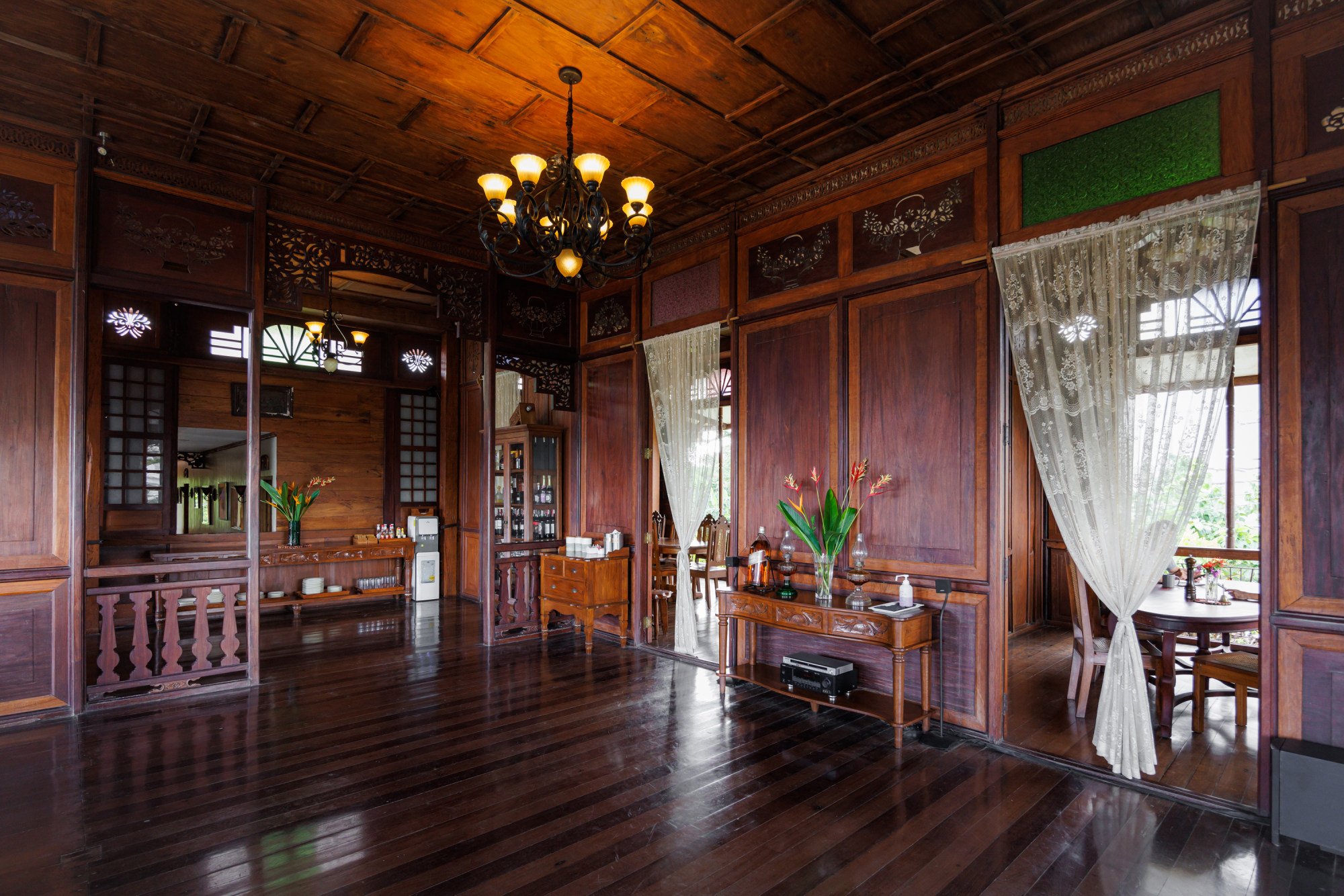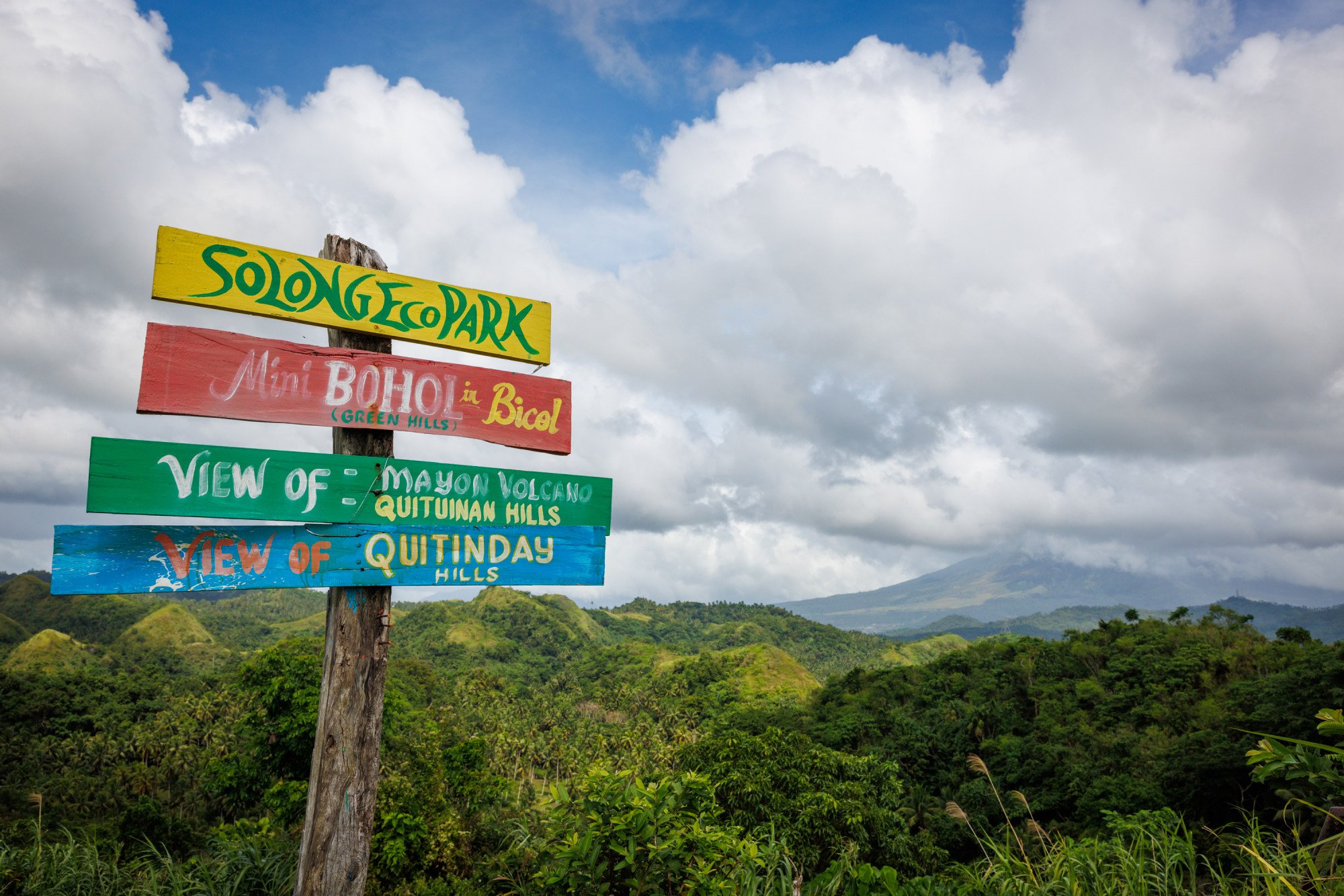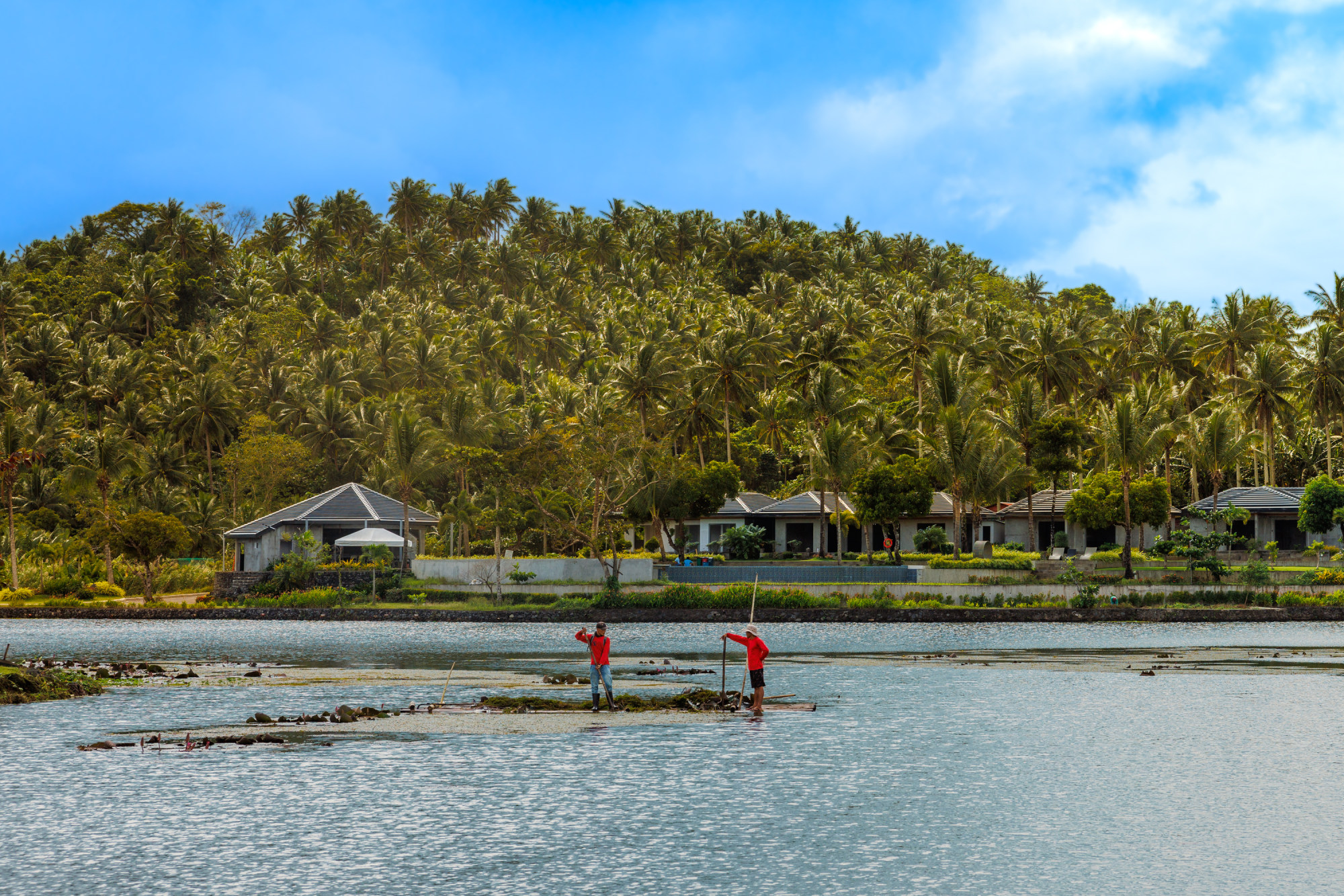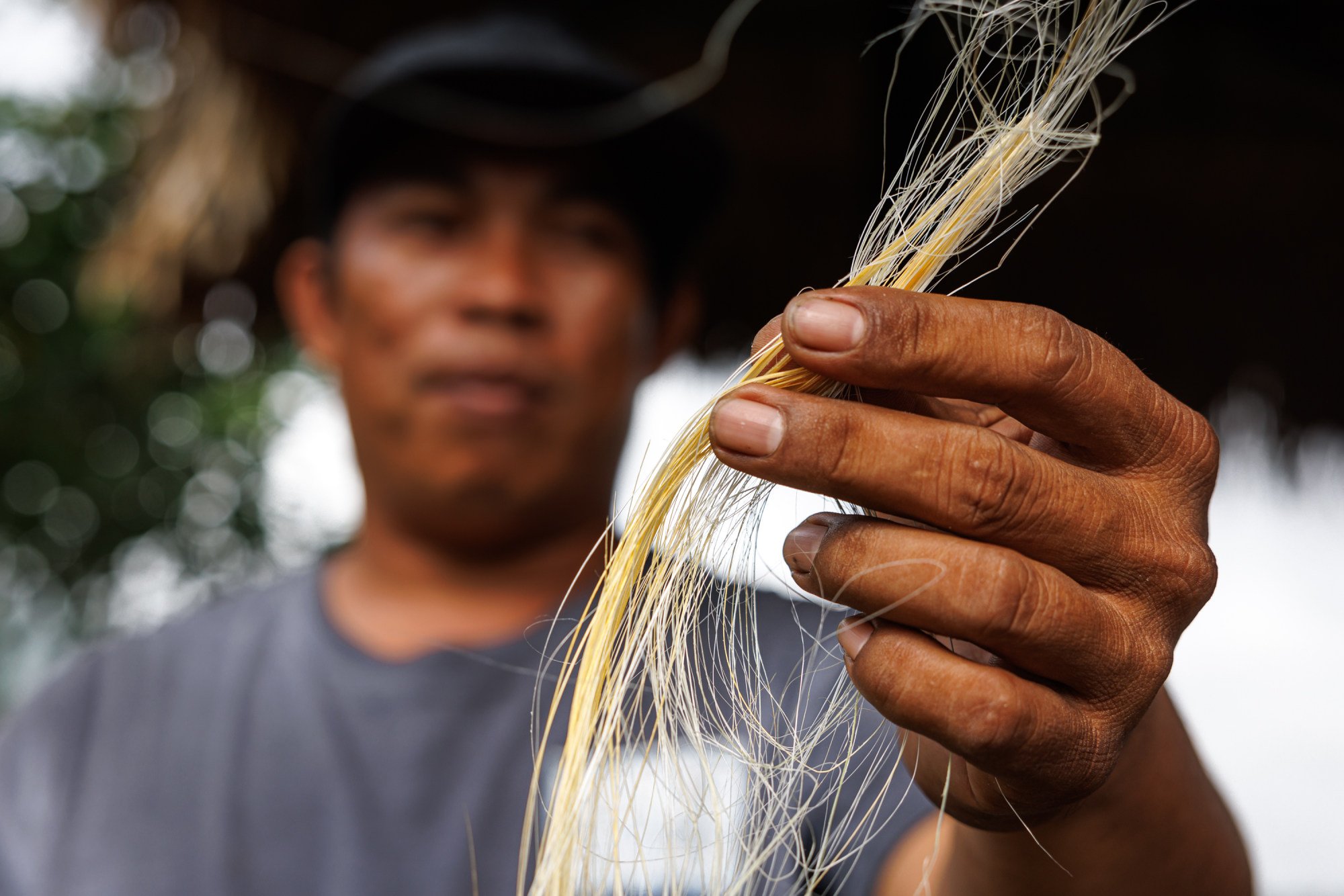
Spicy food in the Philippines? Yes, in Bicol, where you can even find fiery ice cream
- The Bicol region is characterised by its volcanoes, one of which adorns a Philippine banknote and gives its name to the fieriest of ice creams
- The region’s best known dish is Bicol express, which contains pork belly, chillies and coconut milk and is named after an old rail link
The food of the Philippines is many things. It is sour, spiked with the coconut vinegar that matures in backyard barrels; it is sweet, lashed with sugar from the canes that grow tall in the fields of Negros Occidental.
Even on the map, Bicol looks like an outlier, a seahorse-shaped peninsula pointing south from the northern Philippine island of Luzon.
Growing up with a Filipino mother, I had heard tales of Bicolano food, the Philippines’ maverick cuisine: chillies by the bucketload, coconut-milk dishes that sounded more Thai than Filipino. What I never heard was an explanation as to why this was so.

I ponder this question while taking a short flight from Manila to the Bicolano city of Naga. From above, Mount Isarog, one of Bicol’s four active volcanoes, appears crumpled, collapsed under its own power. Perhaps the heat in Bicolanos’ food reflects their volatile environment, I think.
In Naga, I recount my theory to my Bicolana guide, Liezel Mascarinas, and it turns out I am partly right, although the volcanoes’ influence is more geological than metaphorical.
What is Filipino food? Cookbook attempts answer
“Heavy rainfall and volcanic eruptions make the soil more fertile,” she says.
I nod, recalling the dense palm forests I saw on Isarog’s slopes. That explains the coconuts – but what about the chillies?
“We add the chillies to counter the coconuts’ sweetness,” says Mascarinas.

My curiosity satisfied, I am eager for my first taste of Bicolano food, so I check into Casa Simeon, a Spanish-American-style guest house in Bacacay.
Built by Simeon Alparce in 1927, it is now owned by his grandson, Rico Calleja, and managed by Rico’s wife, Jessica Noelle Wong.
“We wanted to reflect the idea of family, togetherness and the Filipino spirit – you know, big groups. We wanted heirloom recipes: we looked into recipes from our grandmothers, our mothers, our aunts and uncles.”

One of these recipes is tinutungan, a chicken and smoked coconut stew – the coconut is charred over hot coals, which impart a caramelised flavour I would normally associate with the wok’s blue-edged steel.
Dessert is baduya at keso – the sweet, stubby bananas my mother calls lady fingers, deep fried and served with a mild white cheese and mango chunks.
Filipino-American’s true life as a chef began with her grandma’s recipes
“In Bicol, we usually serve this to visitors as meriyenda [afternoon snacks],” says Wong. “When visitors arrive, we say, magmeriyenda kamo na – ‘have a snack first’. We wanted Casa Simeon to feel like coming home.”
Having made myself very much at home, I am reluctant to leave the next day – but I have a date with the limestone hills and crystal caves of Solong Eco Park, in Camalig municipality.
After a morning of scrambling and spelunking, I return to the visitor centre to find heaps of meriyenda: suman, binutong and balisungsong, different words for different ways of folding sticky rice and coconut milk in banana leaves. I also find pili nuts.

“Pili nuts are like the Bicolano,” says Mascarinas, cleaving a dried pili fruit in half with astonishing accuracy. “We’re hardened by typhoons, but we have a soft heart.”
I bite down on the proffered pili. Being but days old, it is far richer and smoother than the dry, sometimes over-roasted pili found in souvenir shops.

A short drive north brings us to Sumlang Lake, a man-made body of water at the foot of Mount Mayon, the perfect cone volcano that is Bicol’s most recognisable landmark, with a starring role on the nation’s 100-peso note.
Restaurants, boat-tour operators and a Bicolano cultural centre with a souvenir shop have popped up along Sumlang’s shores, to take advantage of the beauty spot’s popularity.
At stations connected to the cultural centre, Bicolanos demonstrate the art of stripping abaca – a species of banana plant known as Manila hemp – and weaving them into rugs, table runners and baskets. At the pinangat station, chef Virgie Garcia smooths out a pair of taro leaves.
“Pinangat is a type of street food; the locals sell it in the villages from around 2pm,” says Mascarinas.

Fortunately, she has already made one for us to try. The texture is curd-like; the taste, a little funky but not too fishy, with spinach-like earthiness from the taro leaves. The chillies are less dominant than expected, their piquancy dulled by the coconut milk.
I had arrived in Bicol expecting mouth-smarting spice but have instead discovered a market’s worth of delicately balanced flavour.

At 1st Colonial Grill, however, that subtlety is flung out the window. The popular restaurant chain in Legazpi, the capital of Albay province, which is one of the six that make up the Bicol region, throngs with schoolchildren, each cajoling the others to try yet more dangerous dishes.
I seize the chance to taste the famous Bicol express in its original form and finally find the face-melting heat I had been promised, courtesy of a dozen green, bird’s-eye chillies. They wink at me as I neck several glasses of water, trying in vain to douse the fire.
That is just for starters. 1st Colonial is best known for its sili (chilli) ice cream, available in four levels: one, two, three and 10 (Mayon Volcano). No one seems to know what happened to levels four to nine.

It is so famous, it threatens to overshadow 1st Colonial’s other excellent Bicolano flavours, such as pili, latik (caramelised coconut) and carmelado (carabao milk confectionery).
My level 10 scoop arrives, red and luminous as a traffic light. I take a couple of breaths, and dive in.
For a moment, I feel nothing. Then the heat rips around tongue, lips and gums; my eyes prick with involuntary tears. I look across at Mathias Falcone, my dining companion (and photographer), whose face is turning similarly pink.
She missed the taste of ube, so she opened a Filipino bakery in Hong Kong
“It’s all down to speed, isn’t it?” I manage to say to him, though I cannot feel my tongue.
He nods.
From then, it is a race against time: I swallow each mouthful as fast as I can, consuming it before the chilli has a chance to kick in.
My plate empty, I punch the air: Mayon has been conquered. But I need more than water to put out this flame.

My final stop is at the Oragon Craft Brewery, launched in 2020 by Rico Calleja, owner of Casa Simeon.
As I sip on a toasty IPA, Calleja’s spiel – barley imported from Australia; the word oragon is Bicolano for “awesome”– segues into him and his friends telling me all the places they will take me to when I come back.
Why is Bicolano food spicy? I know this, now – but I still cannot shake the idea that it is a metaphor for warmth, however corny that may sound. Of weather, yes – but also of people, and of the welcome you will get if you are ever fortunate enough to visit.

